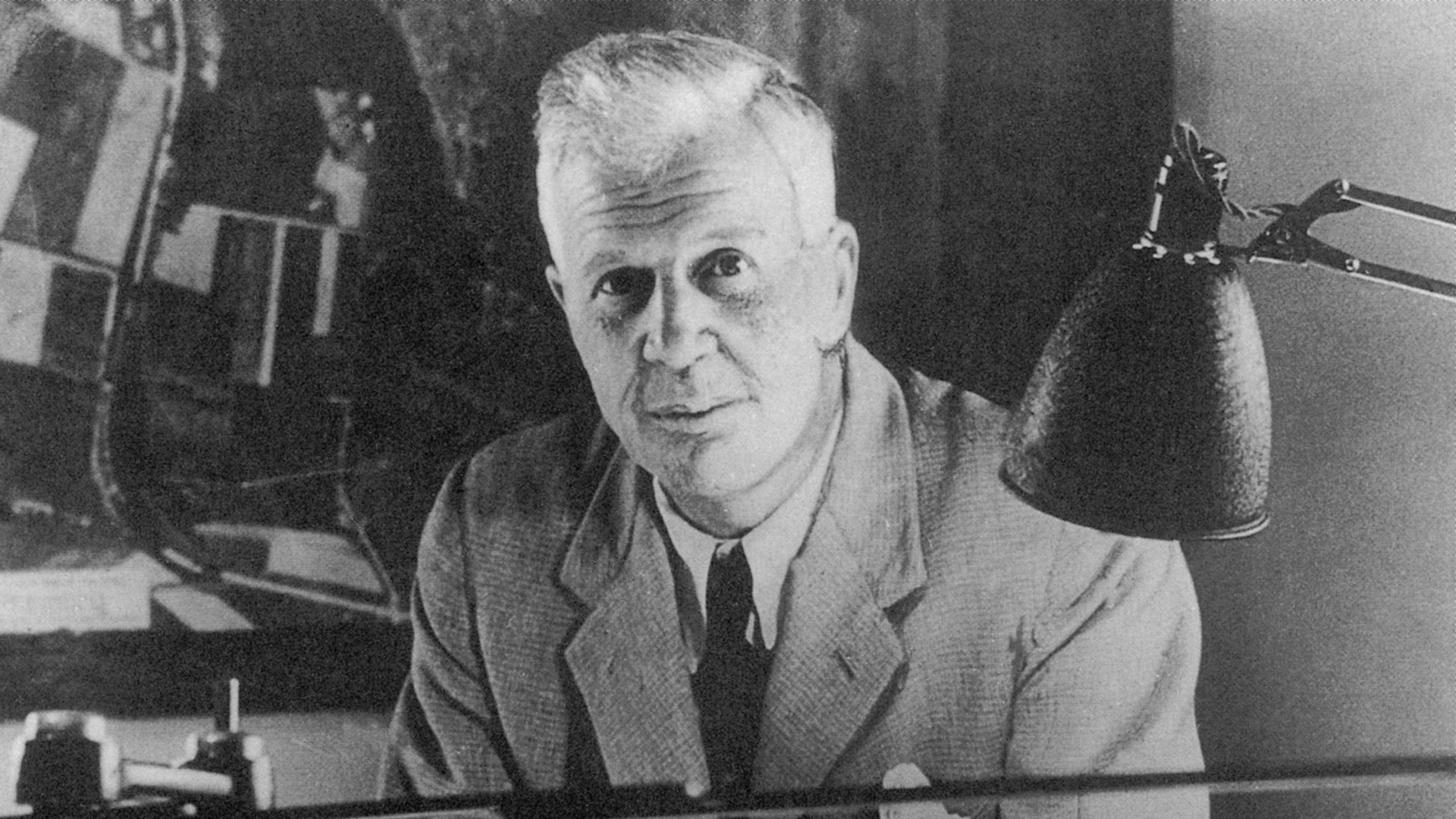
The Dambusters: Sir Barnes Wallis's bouncing bomb relics go up for auction

Two items linked to Sir Barnes Wallis, the mastermind behind the bouncing bombs used in the legendary Dambusters raid, are being sold at auction.
The auction will feature a pair of antique marbles reportedly used by Sir Barnes during his early experiments to see if he could "bounce" an object over water.
The other item is a pair of binoculars that Sir Barnes gave to Sir Michael Redgrave, the actor who portrayed him in the classic 1955 war film The Dam Busters.
The marbles, one measuring one inch in diameter and the other half an inch, are said to have been used by Sir Barnes during initial tests conducted in his back garden.
Sir Barnes himself referenced these tests in a 1951 speech, describing how he used a small catapult to fire marbles at the surface of the water to determine the physics needed to make a bomb bounce.
Mounted in a frame alongside an engraved brass plaque labelled "Operation Highball" these marbles were part of a small collection once displayed at Hydneye House School, where 617 Squadron pilot David Maltby's father served as headmaster.

The Dambusters raid, officially known as Operation Chastise, took place on the night of 16/17 May 1943.
It saw 19 Lancaster bombers from RAF Scampton take off on a mission to destroy the Möhne, Edersee and Sorpe dams in Germany's Ruhr Valley, a critical industrial region.
Using Sir Barnes's revolutionary bouncing bombs, the crews flew at an incredibly low altitude of just 60 feet above the water, releasing the bombs at the perfect moment to skip across the surface, avoiding torpedo nets, and strike their targets.
The resulting damage crippled Germany's water supply and disrupted its war production efforts.
The mission's success came at a steep cost. Fifty-three of the 133 airmen did not return, a survival rate of just over 60%.
Despite the losses, the raid went down in history as one of the Royal Air Force’s most spectacular and daring feats, immortalised in the 1955 film The Dam Busters.
Also up for auction is the pair of binoculars that Sir Barnes gave to Sir Michael Redgrave.
The binoculars are engraved with a plaque reading "Michael Redgrave CBE – From Barnes Wallis CBE – I Used These At Reculver In 1943", referring to the location in Kent where Sir Barnes tested his bomb designs.
Today, the legacy of the Dambusters lives on through 617 Squadron, which still exists and is now based at RAF Marham.
Originally formed for the 1943 raids, the squadron has flown a variety of aircraft, including the Lancaster, Vulcan and Tornado.
Now flying the cutting-edge F-35B Lightning, 617 Squadron remains at the forefront of British airpower.









